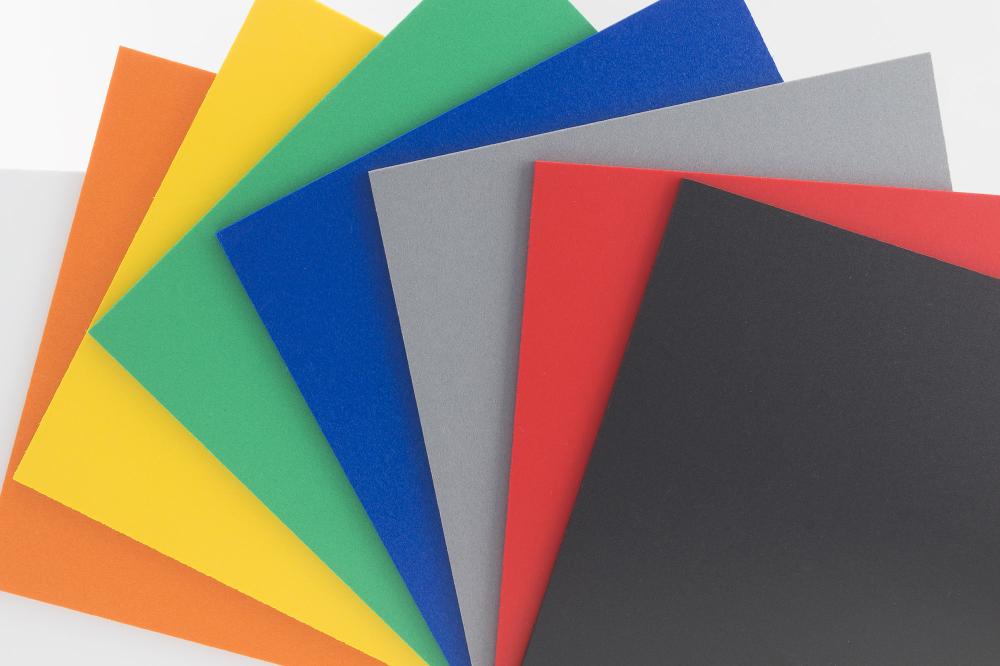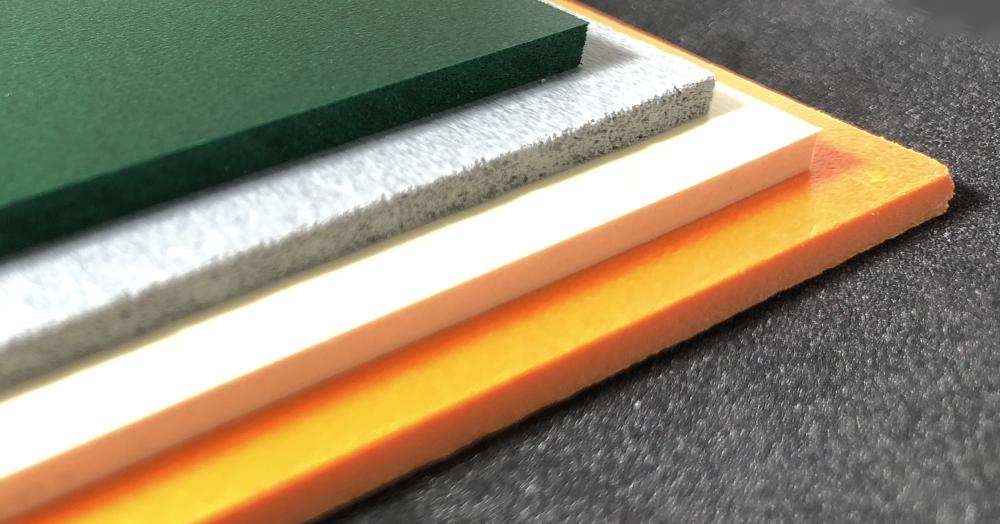Foam PVC vs Solid PVC: Which Is Better?

Are you wondering whether foam or solid PVC sheets are better for your project? You’ve come to the right place! Here at Sheet Plastics, we know the many factors of both materials and will help you come to a conclusion. But to understand differences between foam and solid PVC, we need to know what is PVC material in general?
While solid PVC is, well, more solid and a lot stronger than foam PVC, it doesn’t mean it’s the right material for the job. For example, the solid version offers a high-gloss finish often found in wall cladding, but its foam competitor is also suitable for the same application because of different benefits.
What Is PVC Material?
In order to manufacture foam and solid PVC sheets, a general PVC mixture is needed first. Polyvinyl chloride, or PVC, is a thermoplastic polymer derived from multiple monomers, making it a synthetic plastic.
Due to its many components, it is often difficult to recycle and deemed one of the most damaging plastics to the environment. However, PVC is also reusable as it can be crushed into powder, turned into pellets, and then reshaped into brand new products. Knowing this, it could also be considered one of the most versatile materials.
There are multiple types of PVC, such as uPVC, pPVC, CPVC and PVC-O. Each has their own uses and advantages, whether you require a durable window frame or a flexible electric cable. But what is PVC foam and its solid competitor?
What Is PVC Foam?
Foam PVC is a lightweight material with a soft and slightly bumpy texture primarily used for insulation. Unlike its slightly misleading name, it is not similar to regular foam textures, so it will not bend or break easily when pressed.
With a mixture of general PVC and polyurea, foam PVC is given a strong bond and set shape. As it has a closed-cell structure, it can be easily cut, nailed and screwed, and can soften (even reshape) if left in boiling water.
What Is Solid PVC?
Solid PVC is a slightly heavier material than its foam alternative, meaning it is even more durable too. However, foam and solid PVC were created for completely different purposes. In fact, acrylic and polycarbonate sheets bear a closer resemblance to solid PVC considering its applications and benefits.
Its smooth texture and solid form allows it to be shaped for a variety of applications, and it’s easily cut using standard power tools. Unlike foam PVC, this form can be curved to hide unappealing structure, such as wires and pipes, or be a reinforcement as a stand or screen.

Foam PVC vs Solid PVC Applications
Foam PVC versus its solid counterpart have extremely contrasting properties and uses. Before choosing a material, it’s important to understand the full requirements of your project.
For example, foam PVC is often used in the marine and food industries, but not all types of foam are suitable for these applications. In comparison, solid PVC may be suitable for a headboard, but that same thickness won’t be suitable for a bedboard.
Once you have your specifications, you can cater the thickness, size, and type of PVC you actually need for your project. As a general guide, below is what foam and solid PVC are suitable for:
Foam PVC Applications
- Artwork
- Cups and containers
- Cushioning
- Decorations
- Insoles
- Partitioning
- Printing
- Props
- Swimming gear
- Wall cladding
Solid PVC Applications
- Billboards
- Displays
- Electrical boxes
- Filing strips
- Folders
- Food preparation areas
- Headboard/bedboards
- Signage
- Stands
Foam PVC vs Solid PVC Benefits
When considering whether to use foam or solid PVC sheets, we recommend learning their benefits before making a decision. As they are suitable for a wide range of applications, it is expected they will have just as many benefits. You should keep in mind there are different grades of PVC, which changes the capability of the advantage.
Foam PVC Benefits
- Corrosion protection
- Does not delaminate
- Durable
- Heat resistance
- Impact resistance
- Keeps shape after years
- Lightweight
- Long-lasting
- Water-resistant
- Weather-resistant
Solid PVC Benefits
- Chemical resistance
- Clear prints
- Easily fabricated
- Glossy finish
- High impact strength
- Moisture-resistant
- Non-porous
- Smooth and flat surface
- Strong and rigid
- Works well with adhesives
Which Is Better? Foam PVC or Solid PVC?
At the end of the day, it is entirely up to you whether foam or solid PVC is better. Ultimately, it depends on your requirements, such as the application, size and thickness specifications, benefits, and overall aesthetic. At Sheet Plastics, we can advise you on all of these things to equip you with the best material and outcome.

Cut-to-Size Foam PVC Sheets at Sheet Plastics
We provide a variety of high-quality foam PVC suitable for many applications. Whether you require flamboyant yellow wall cladding to attract new customers or an elegant matte white sheet for signage, we have the right product for you.
Our prices start at just 6p with a thickness ranging from 3 mm to 10 mm. All our PVC sheets are bespoke and cut-to-size, starting from 50 mm x 50 mm in width and length. If your specifications are in a different measurement, we can also calculate in centimetres and metres.
Contact us today with any questions about our foam PVC sheets or to start your project. Alternatively, test the materials yourself before making a decision by ordering a sample.







